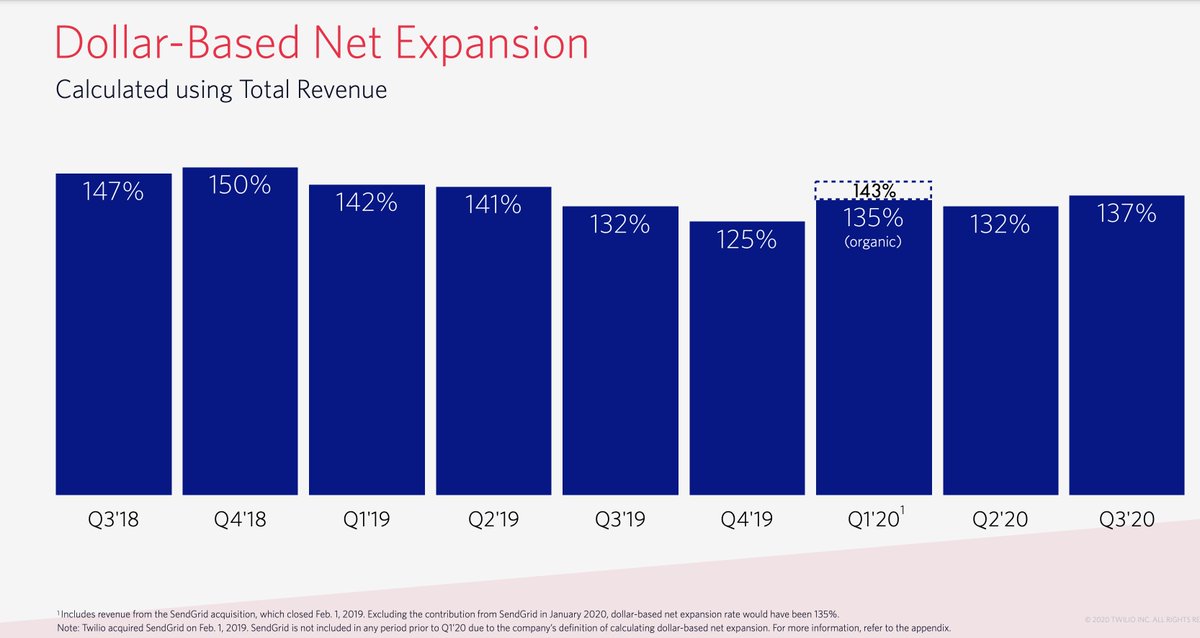
Bill.com is one of my favorite SaaS stories
We run SaaStr on it & it makes my life 10x easier
It's a great 2nd-time founder story. CEO sold first co for $150m & then did it again. It was hard. But today runs an $11b leader
Let's look at 5 Interesting Learnings:
We run SaaStr on it & it makes my life 10x easier
It's a great 2nd-time founder story. CEO sold first co for $150m & then did it again. It was hard. But today runs an $11b leader
Let's look at 5 Interesting Learnings:
#1. It can take a long time with SMBs. Bill.com has 100,000+ SMB customers ... and it took them 14 years to get to IPO.
Growth often was slow. But it >accelerated< at $100m ARR< to 56% YoY.
Growth often was slow. But it >accelerated< at $100m ARR< to 56% YoY.
#2. Bill.com had 110% NRR at IPO and 121% today, and 86% logo / customer retention.
So again, you can get to 100%+ NRR even with the tiniest of customers ... IF they really need you.
They run their businesses on Bill.com.
So again, you can get to 100%+ NRR even with the tiniest of customers ... IF they really need you.
They run their businesses on Bill.com.
#3. Revenue growing much faster than customer count -- even with tiny SMBs.
This is a consistent theme with SaaS leaders. At IPO, Bill.com was growing revenue 55% ... but customer count "only" 21%. We see a similar story at Pagerduty, Asana, etc. too.
This is a consistent theme with SaaS leaders. At IPO, Bill.com was growing revenue 55% ... but customer count "only" 21%. We see a similar story at Pagerduty, Asana, etc. too.
#4. Being even a partial "fintech" can really boost revenues
Shopify is the extreme example, which now gets far more revenue from merchant services than software subscriptions
Interest on Bill.com accounts was 20% of revenue at IPO ... up from 0% a ways back
Shopify is the extreme example, which now gets far more revenue from merchant services than software subscriptions
Interest on Bill.com accounts was 20% of revenue at IPO ... up from 0% a ways back
#5. Word-of-mouth in the end is the engine of growth for almost all SaaS companies at scale.
But especially SMBs, with their very low price points.
At IPO, 50% of Bill.com's customers came from word-of-mouth.
But especially SMBs, with their very low price points.
At IPO, 50% of Bill.com's customers came from word-of-mouth.
It's a reminder you have to try to make >every< customer happy, not just your largest ones.
The smaller customers can spread the word more ... because there are more of them.
Bill.com shows how it works at scale.
The smaller customers can spread the word more ... because there are more of them.
Bill.com shows how it works at scale.
A final bonus #6: at IPO, Bill.com was at $125m+ in ARR, but had just 544 employees.
Let that sink in a bit.
Yes, Bill.com didn't have a traditional enterprise sales team, etc.
But it again shows you can be efficient -- if you want to be.
Let that sink in a bit.
Yes, Bill.com didn't have a traditional enterprise sales team, etc.
But it again shows you can be efficient -- if you want to be.
• • •
Missing some Tweet in this thread? You can try to
force a refresh



